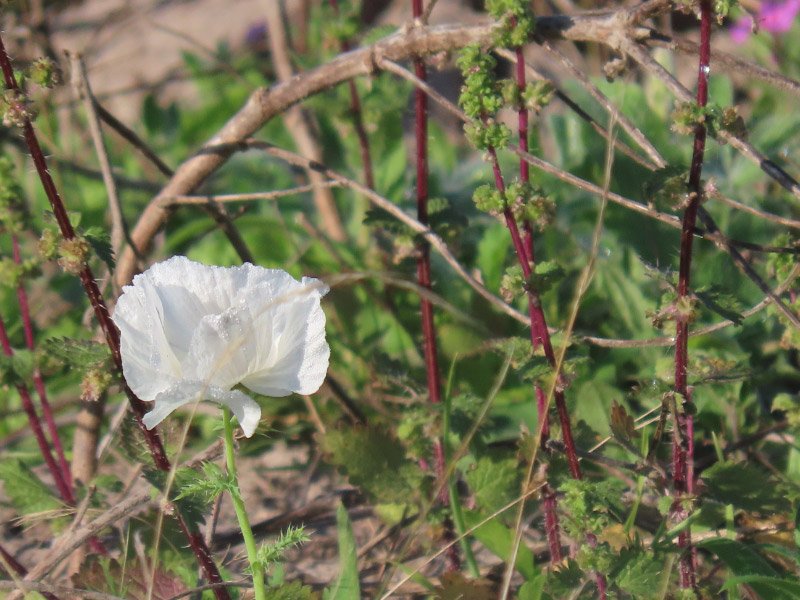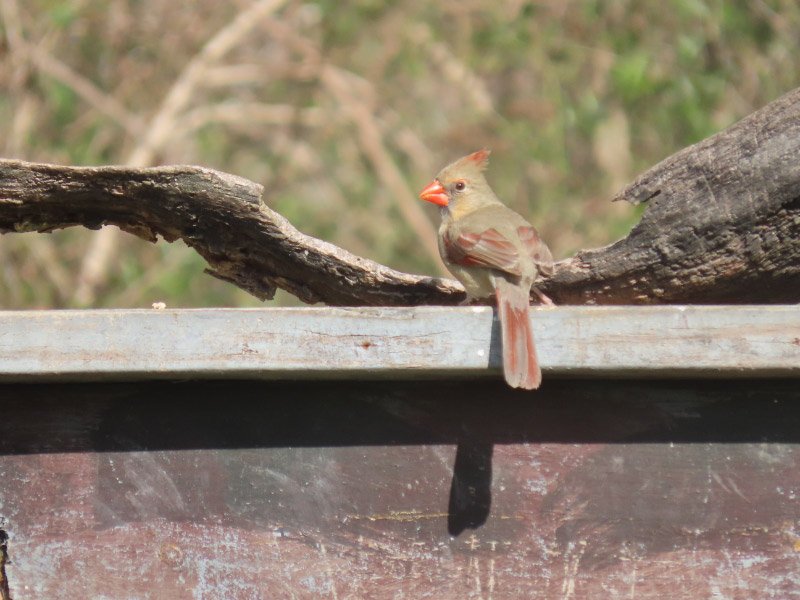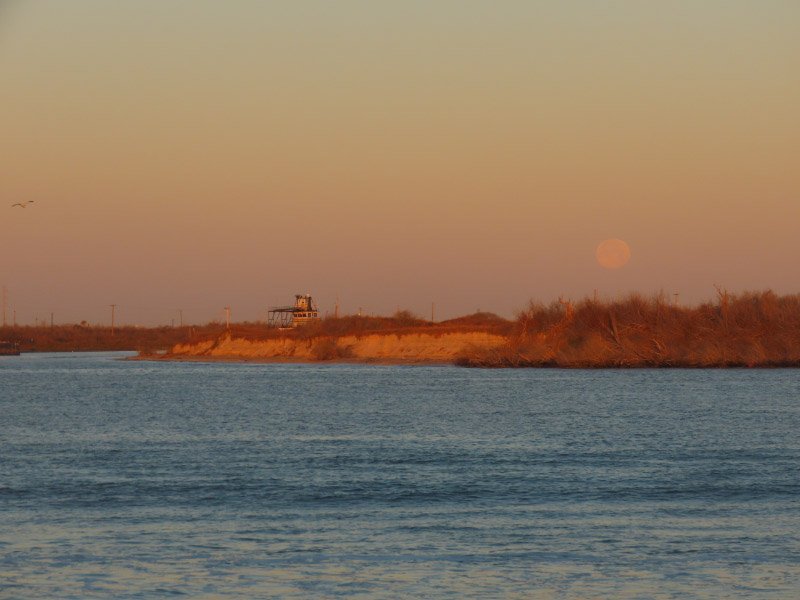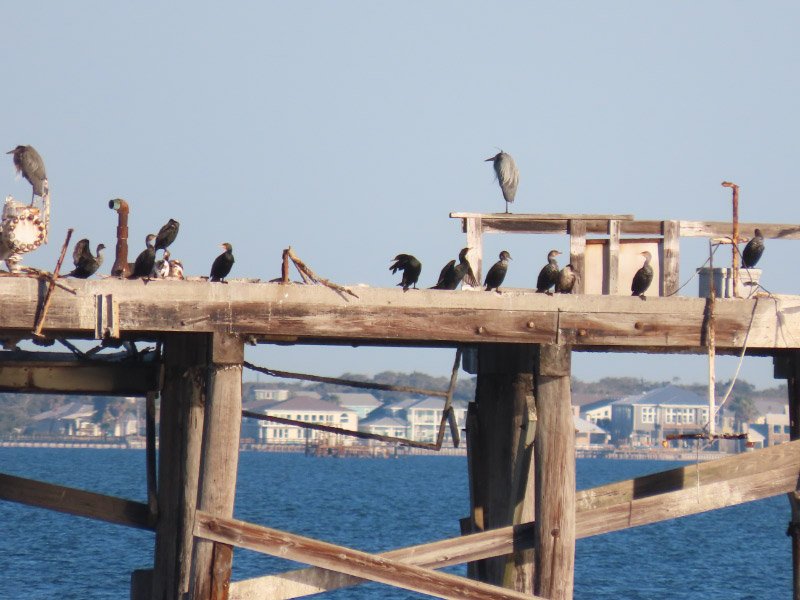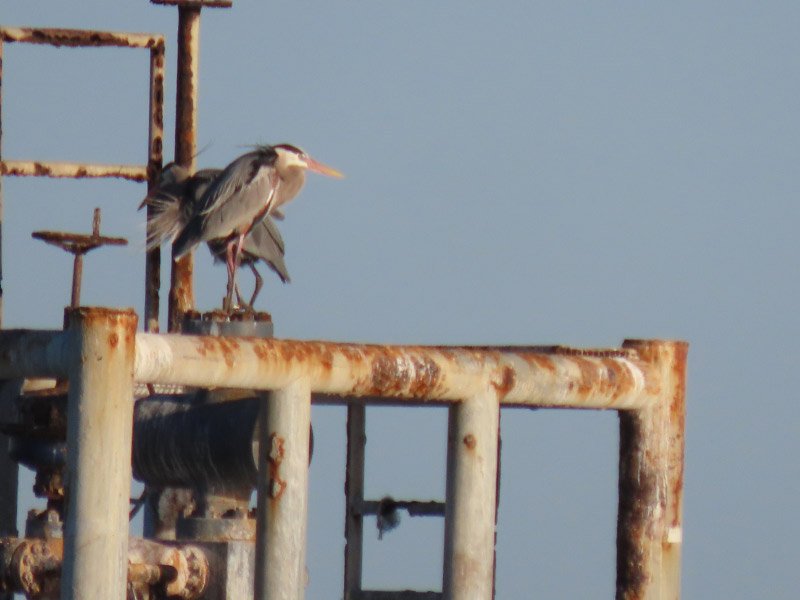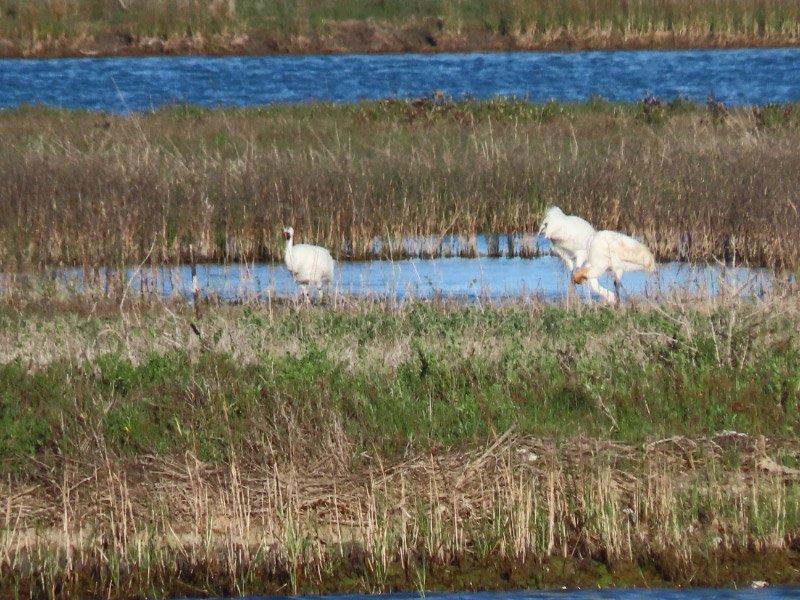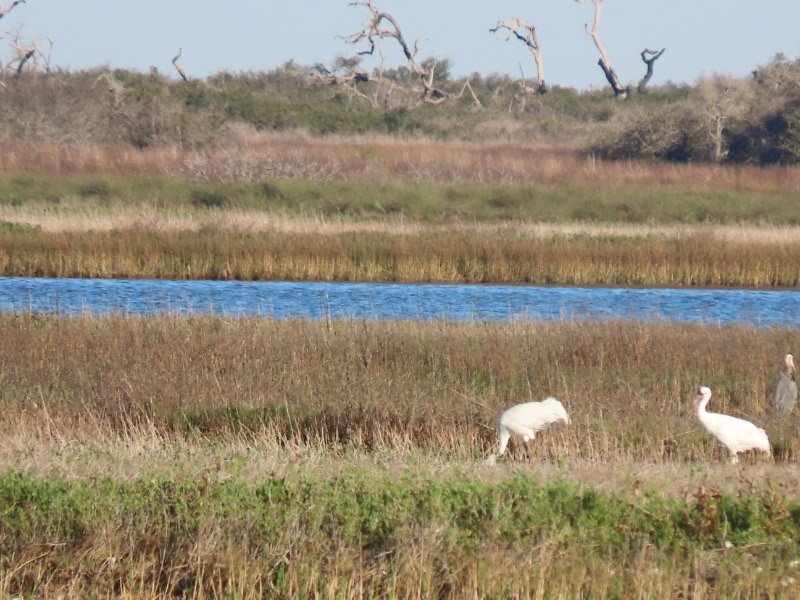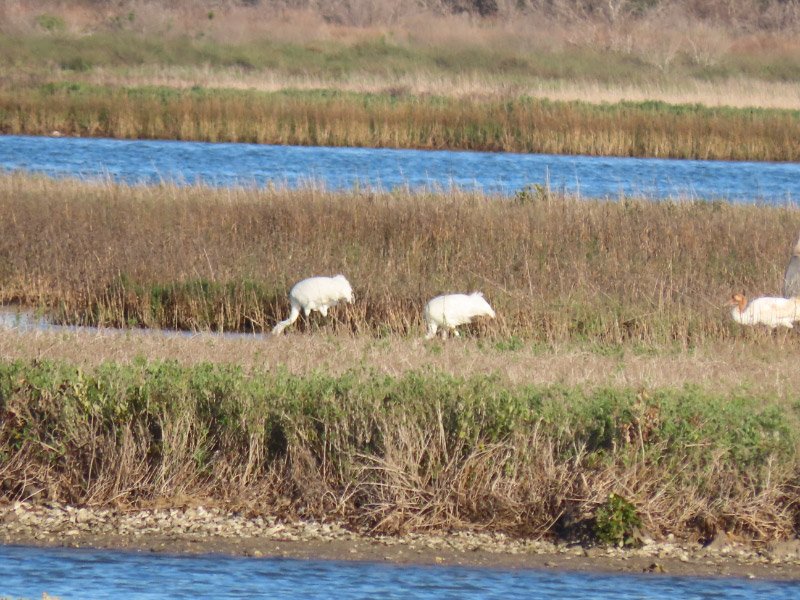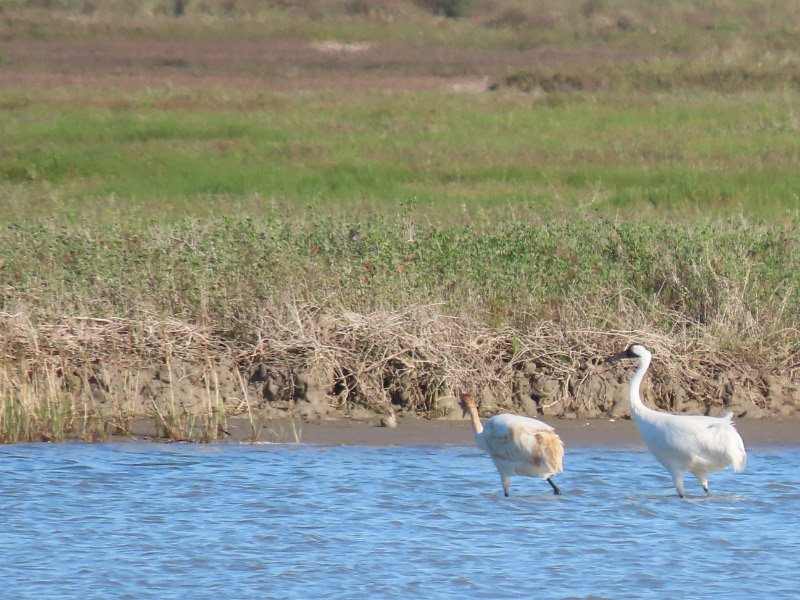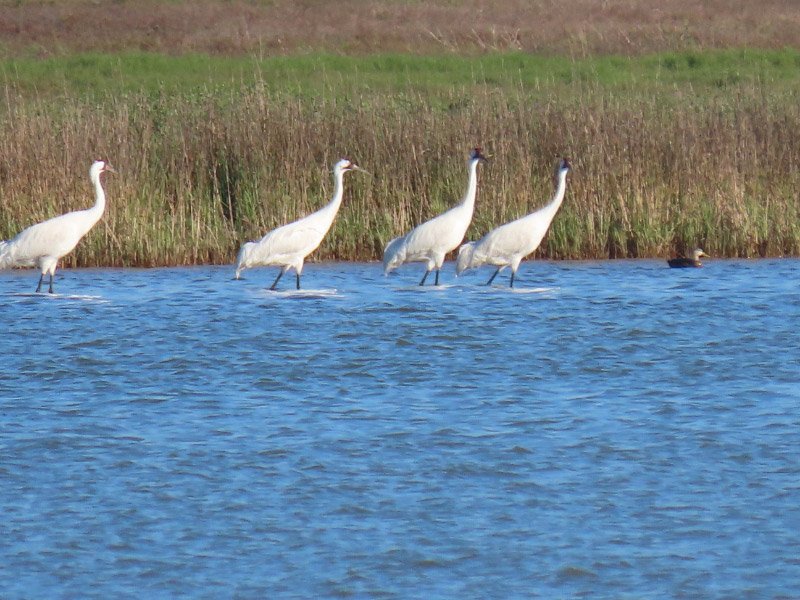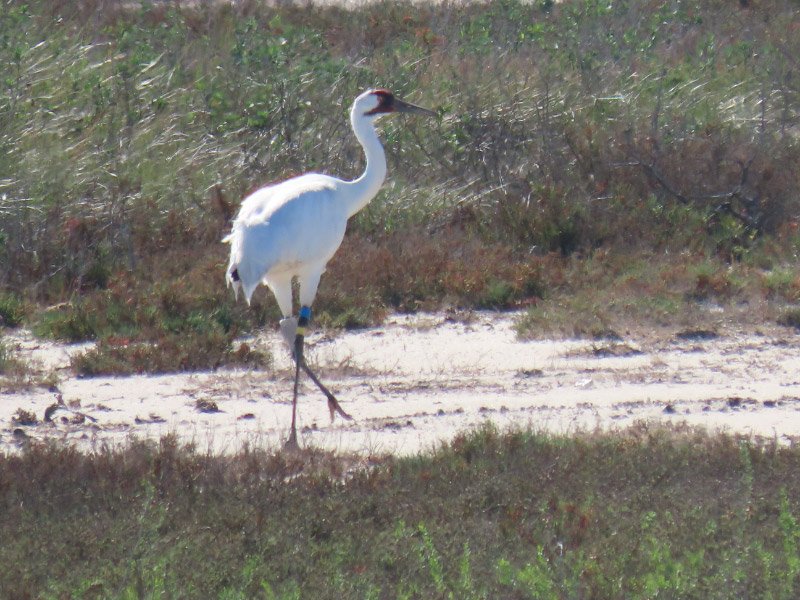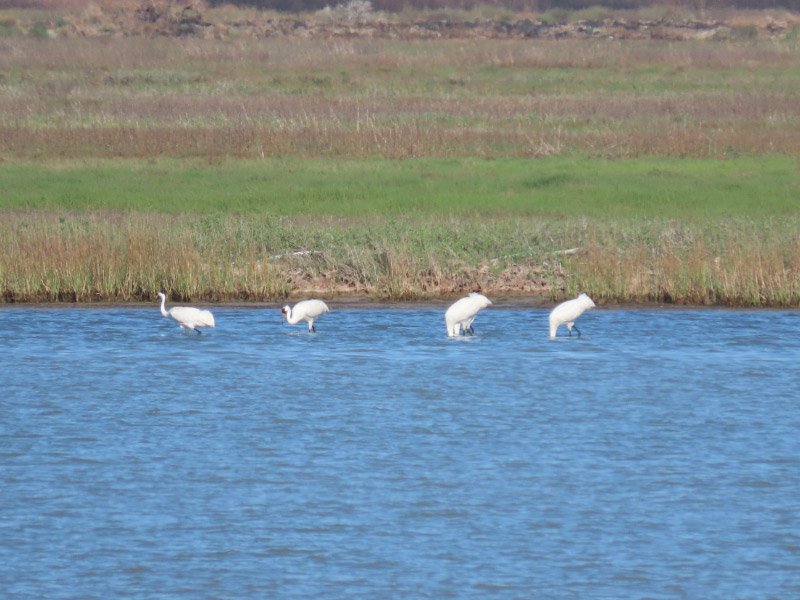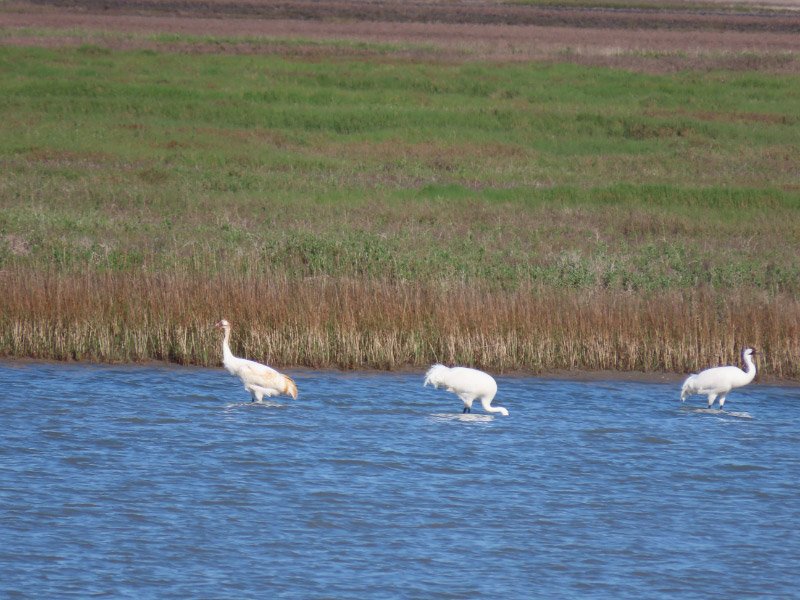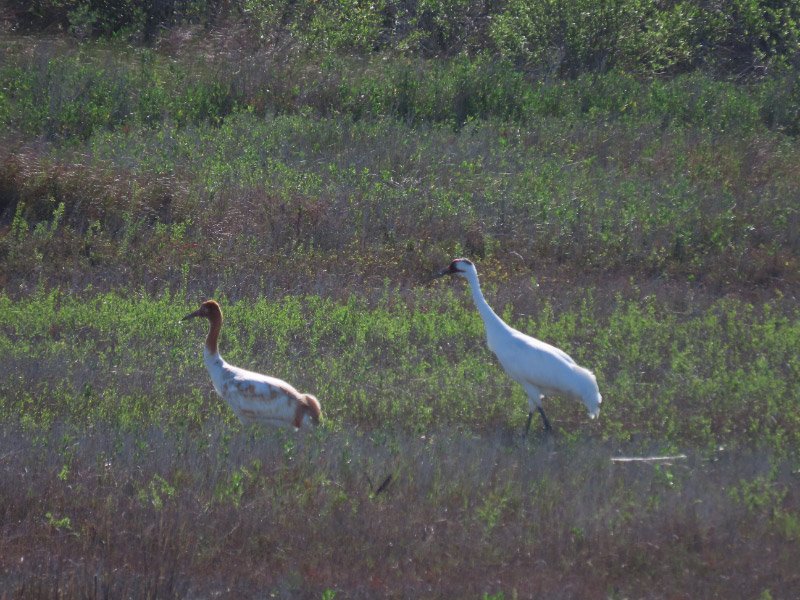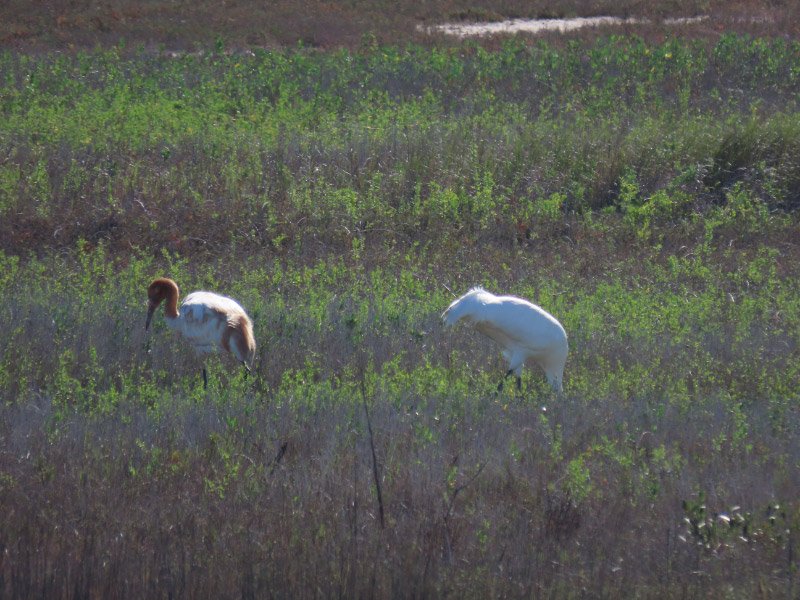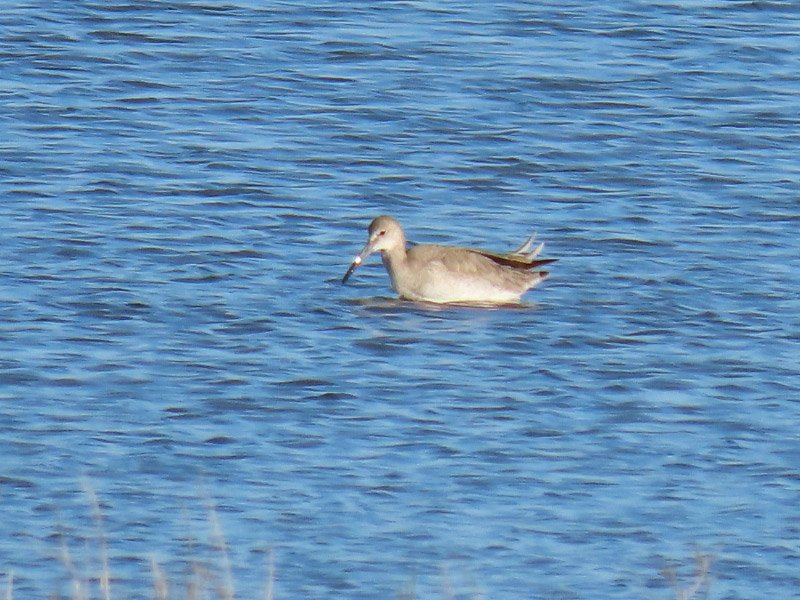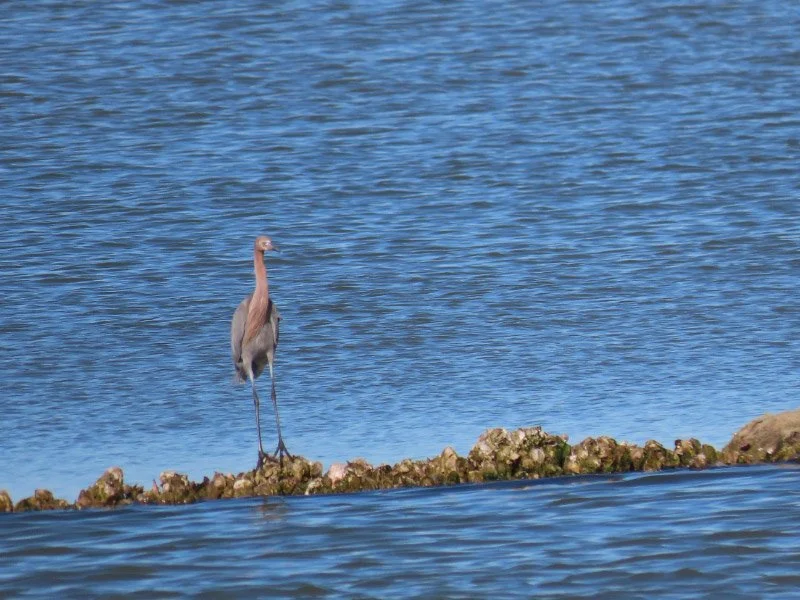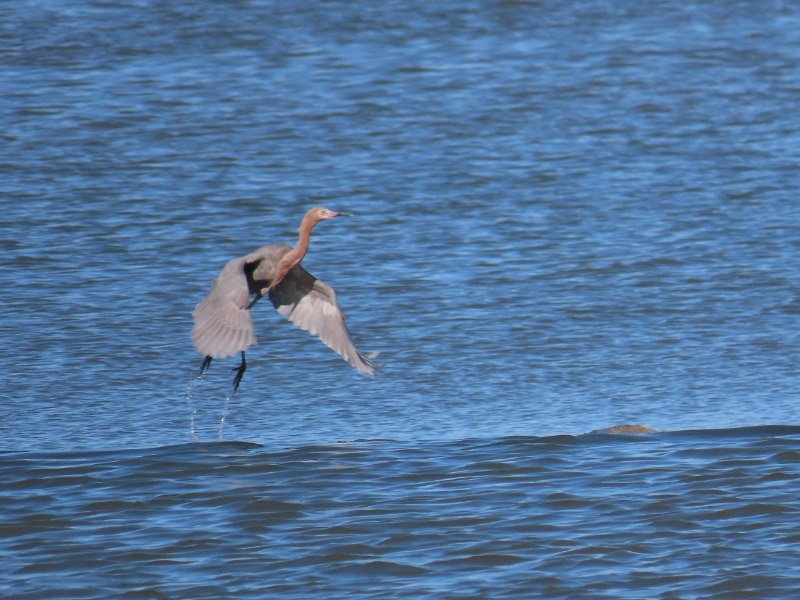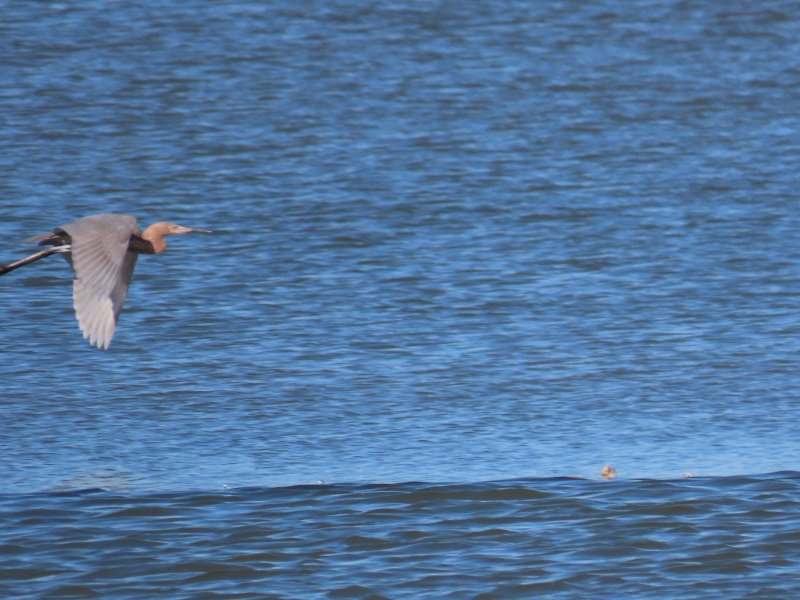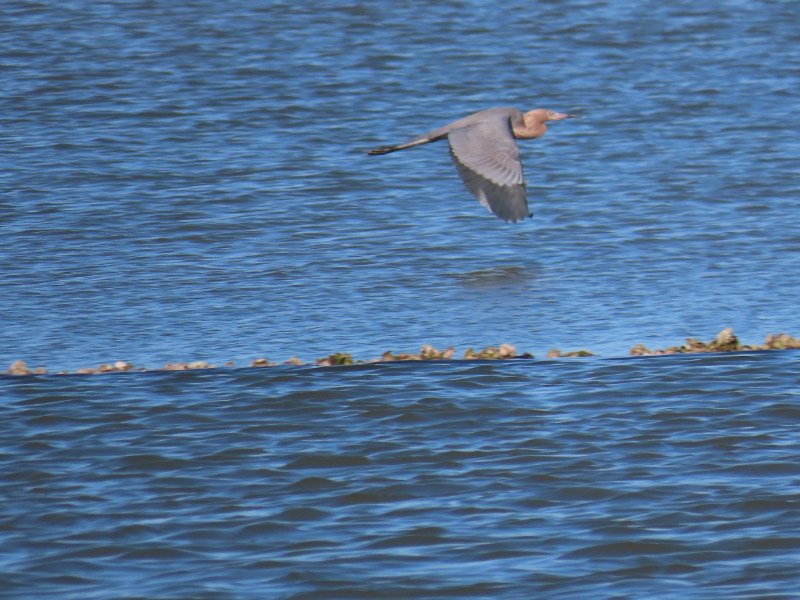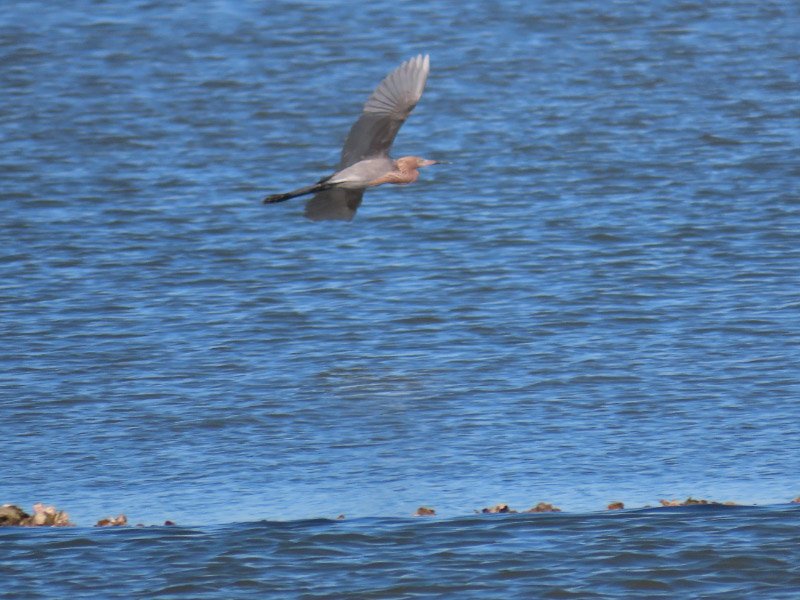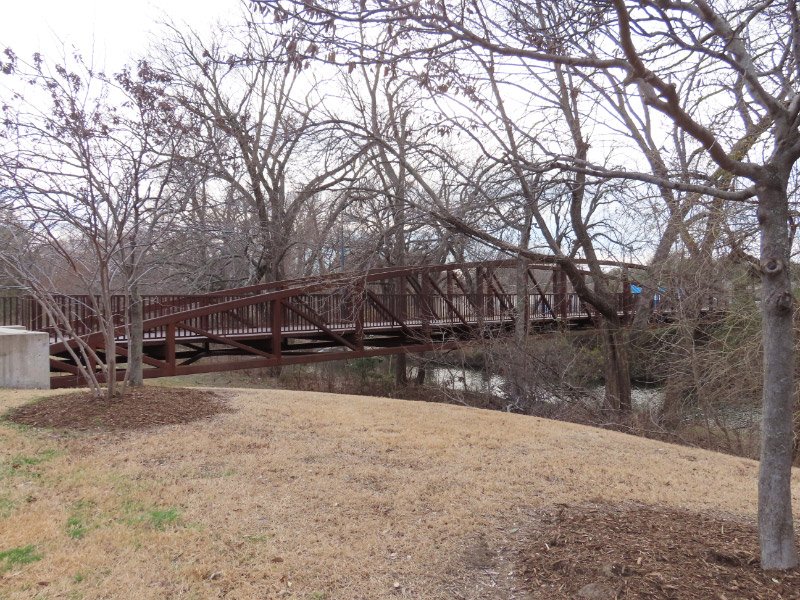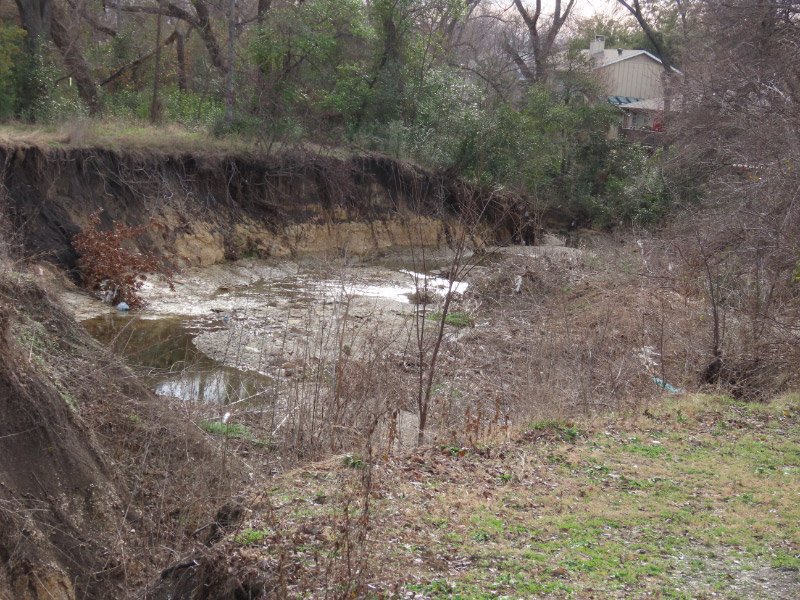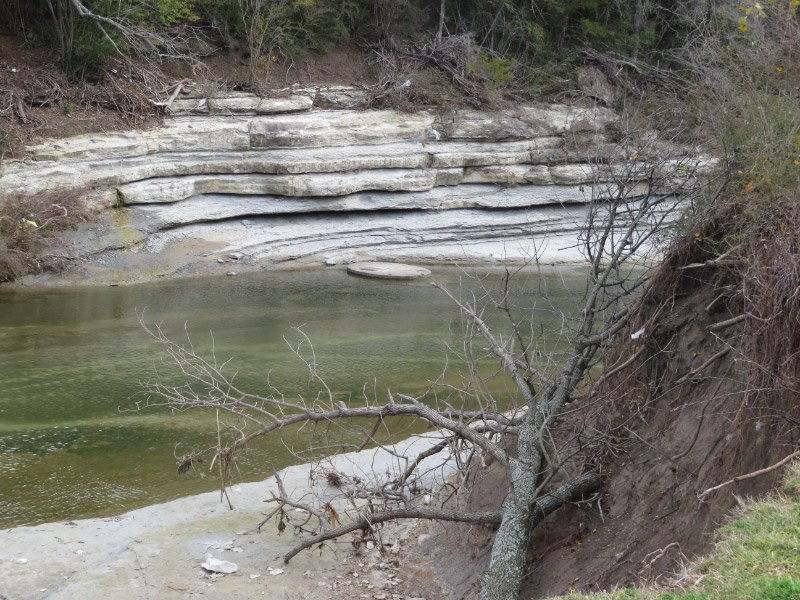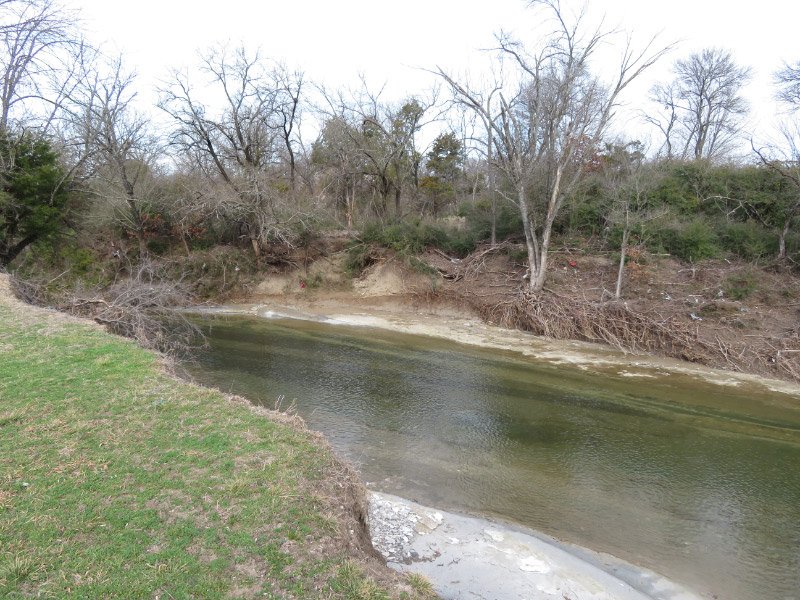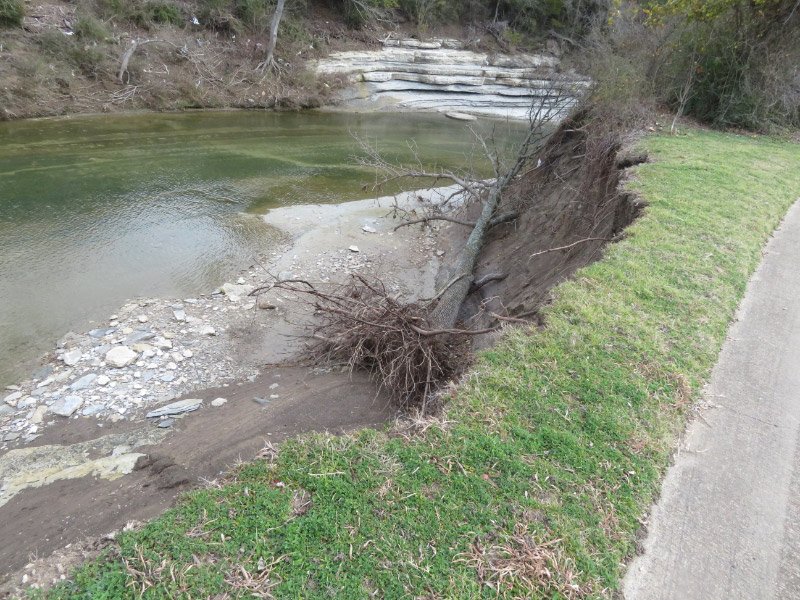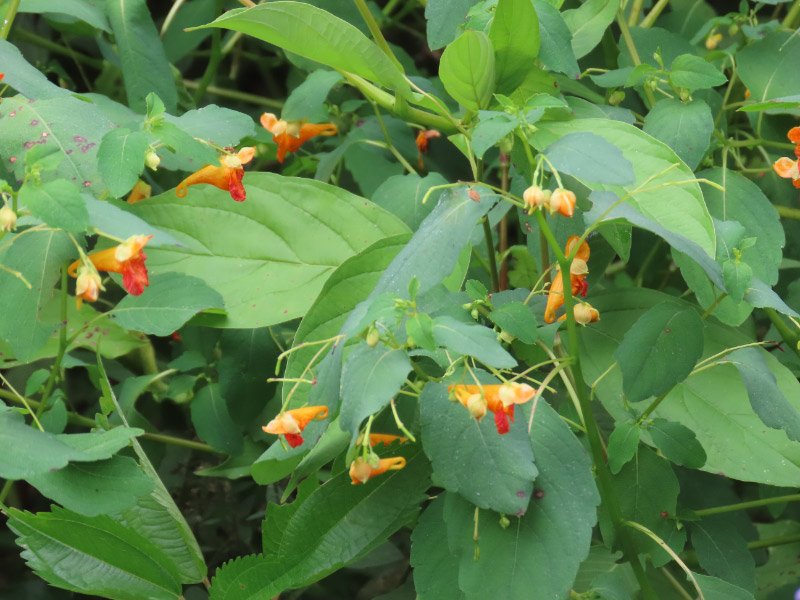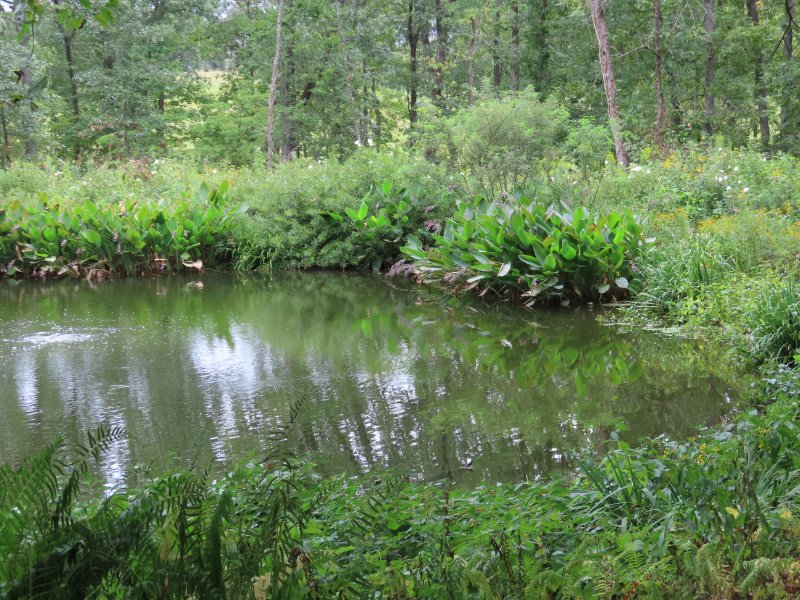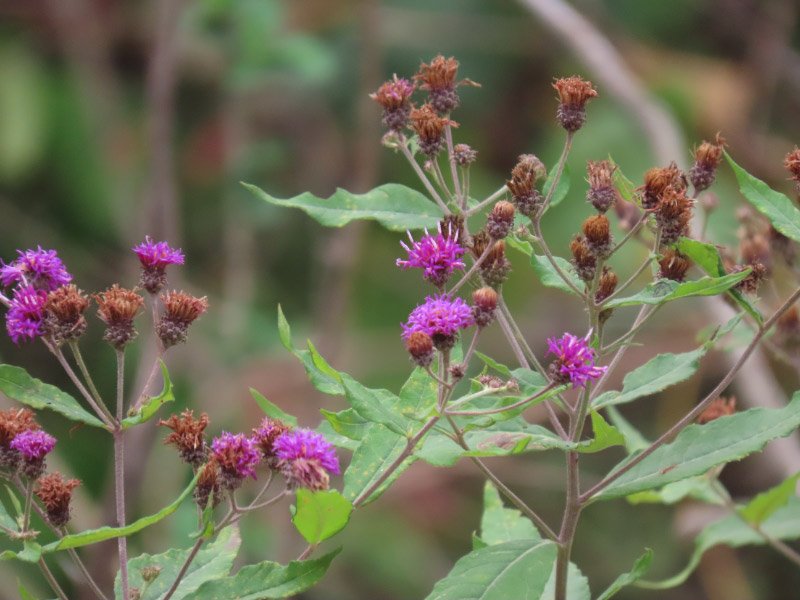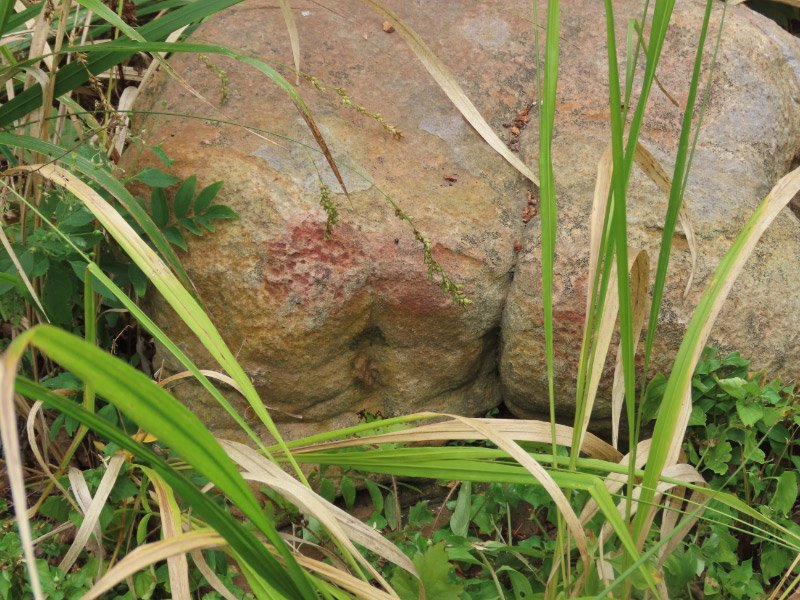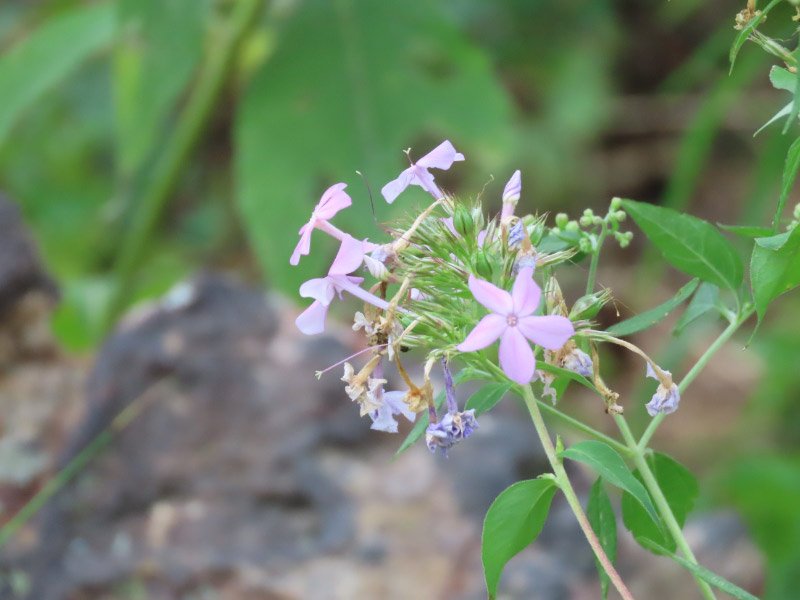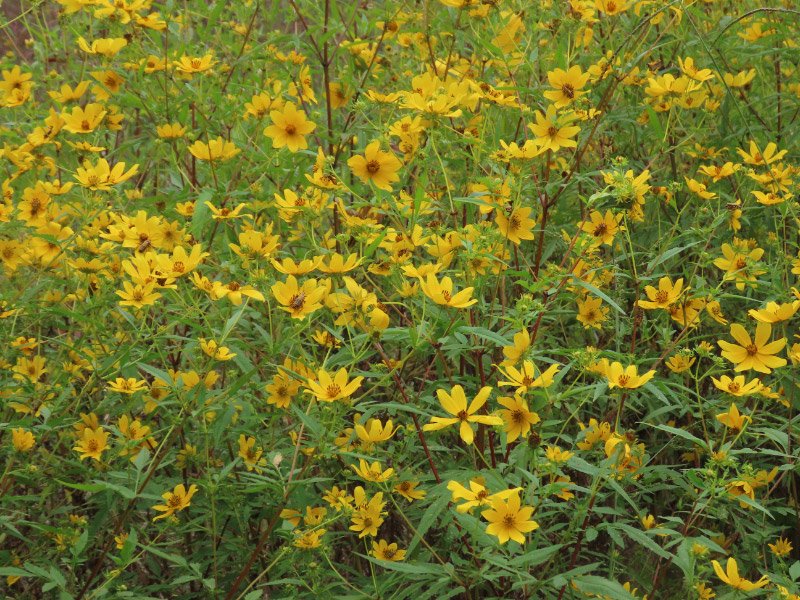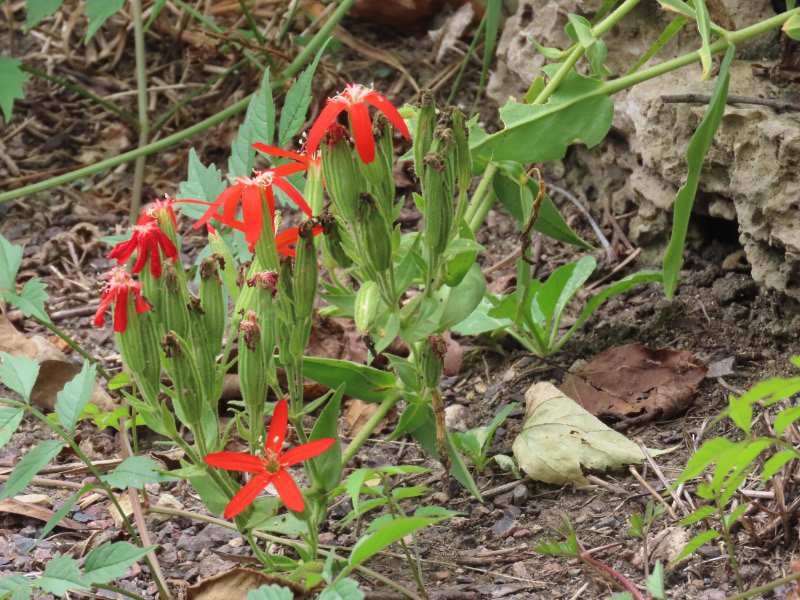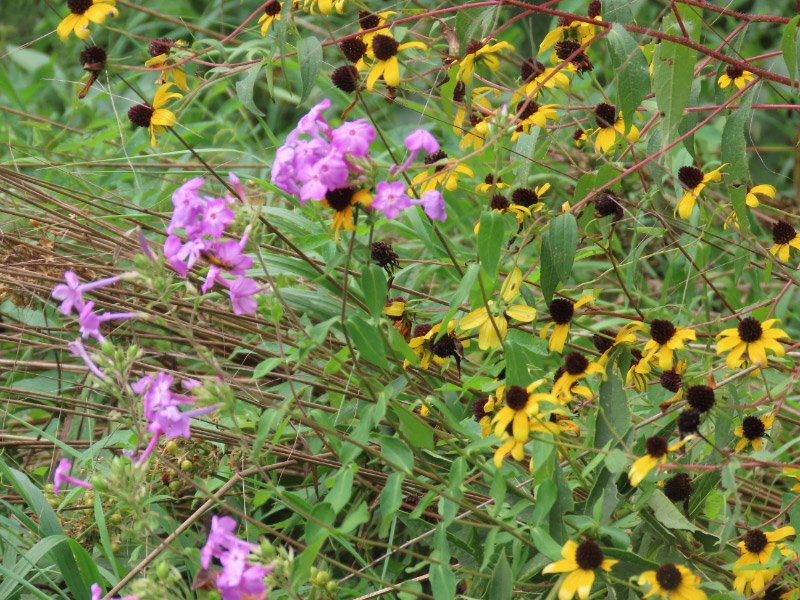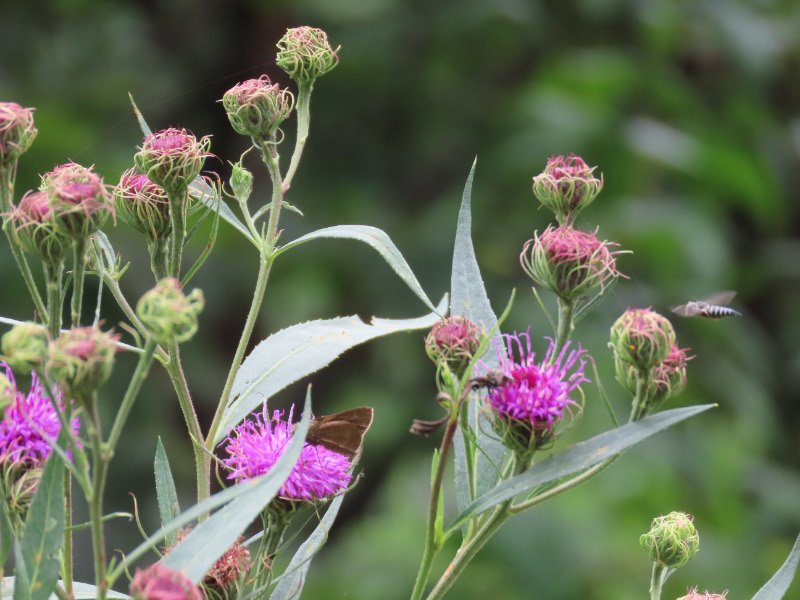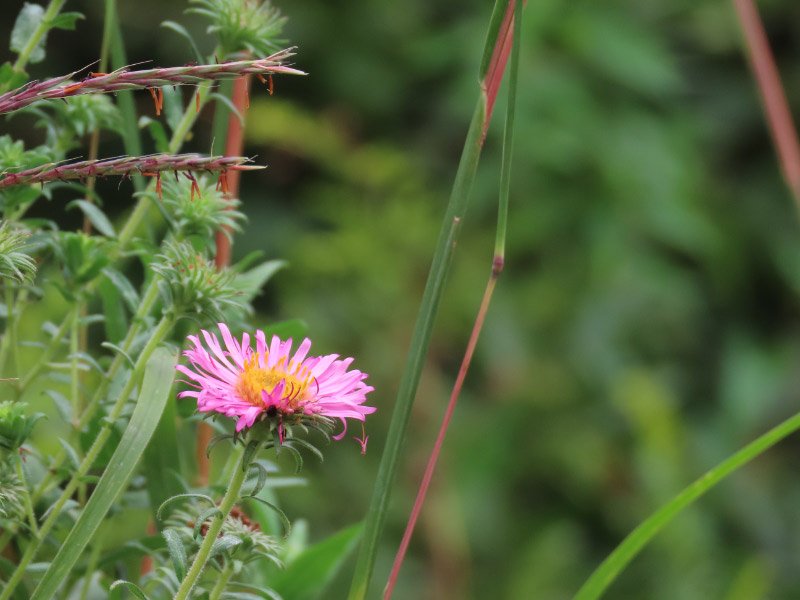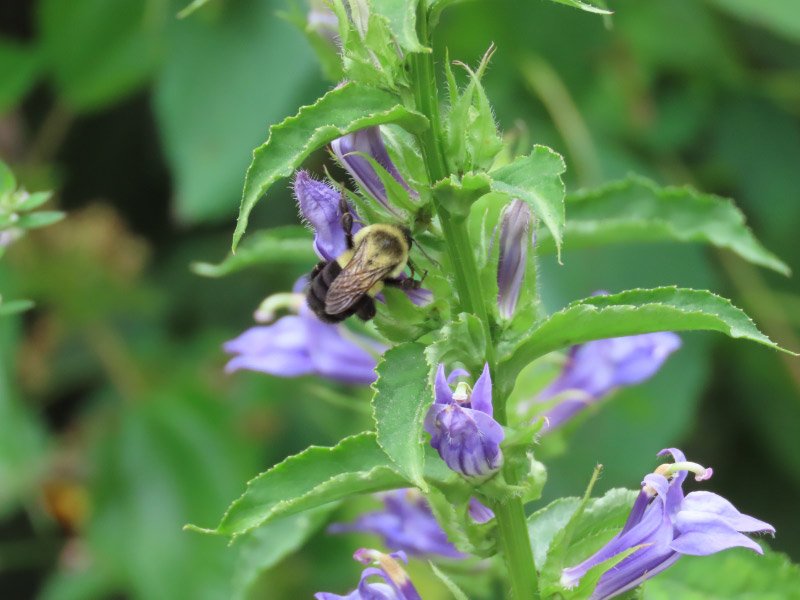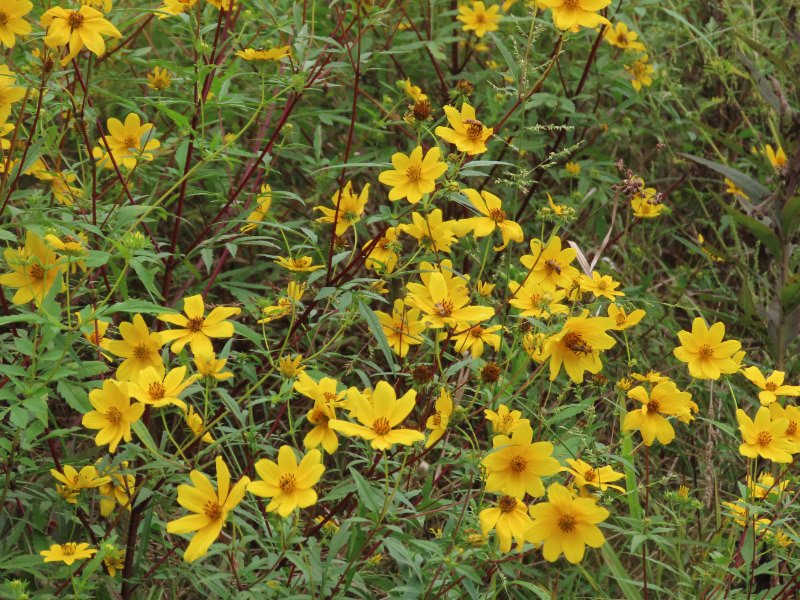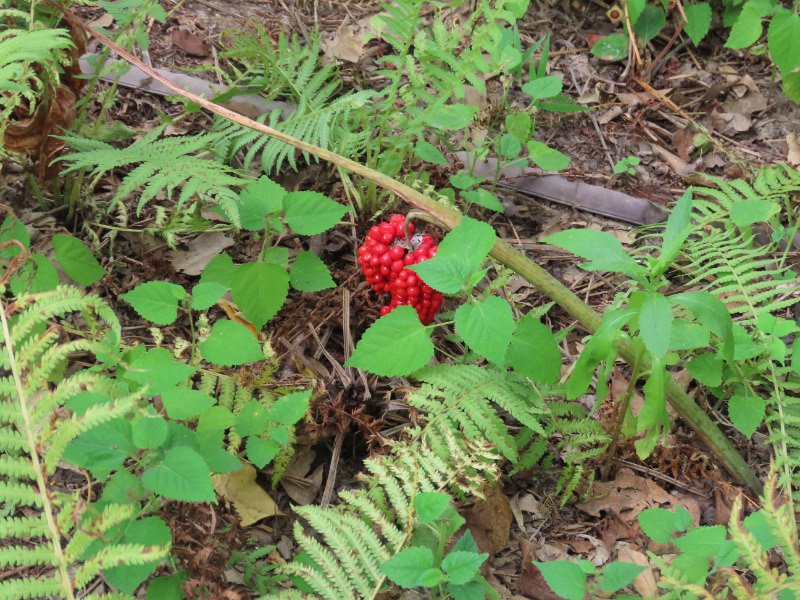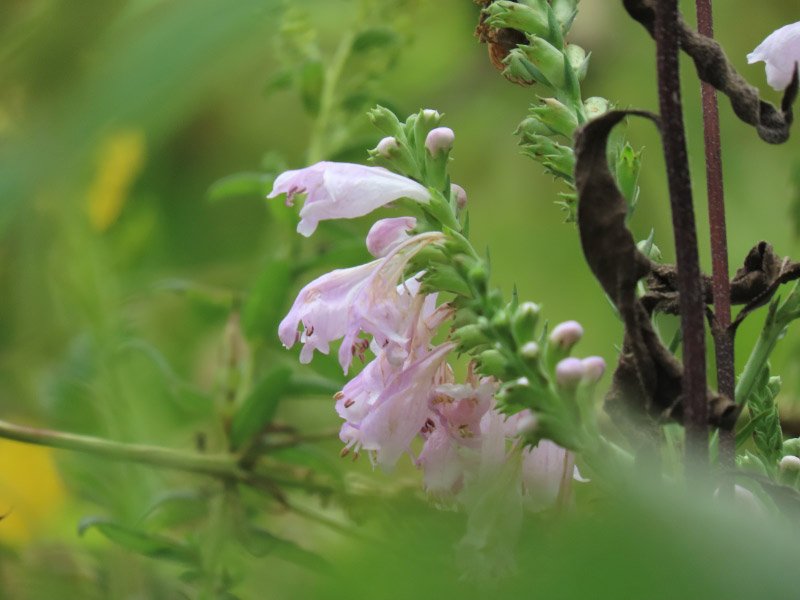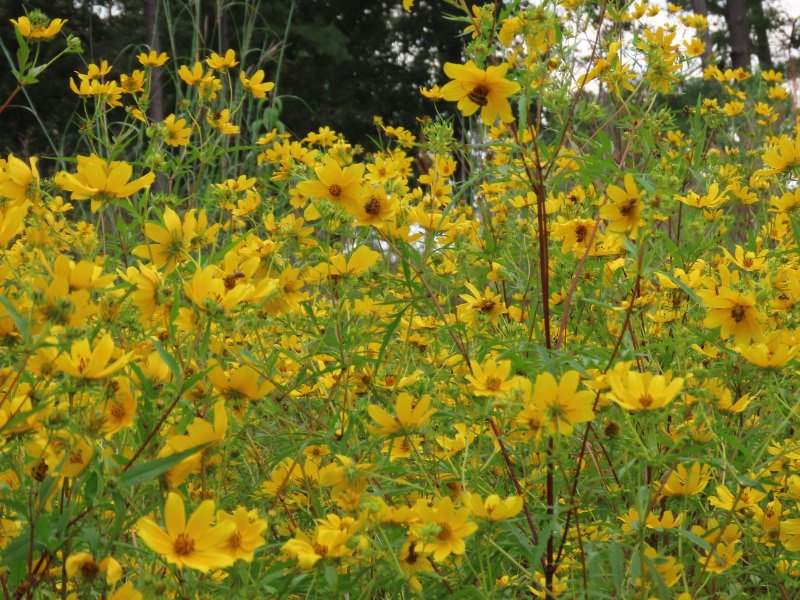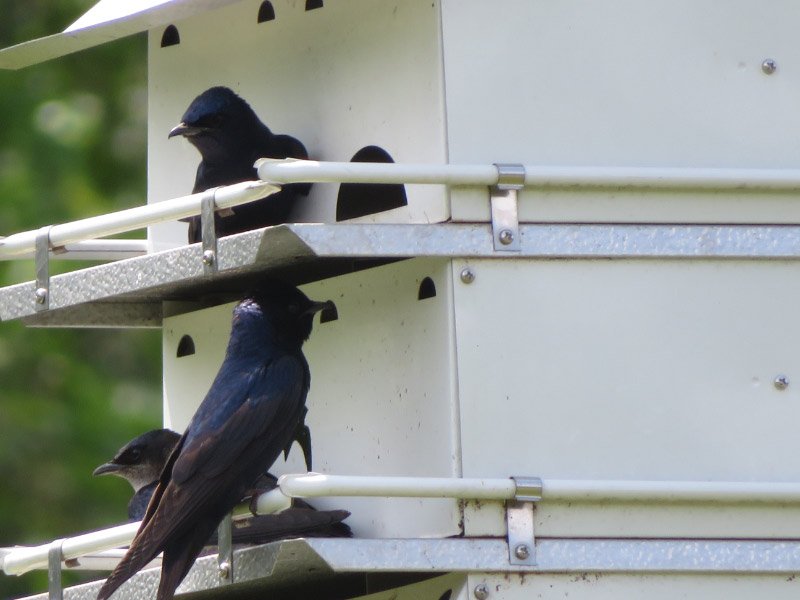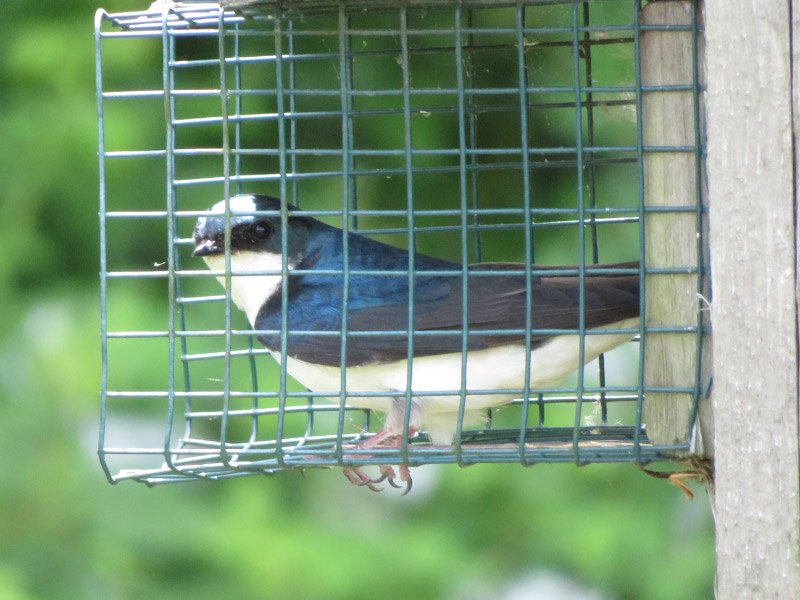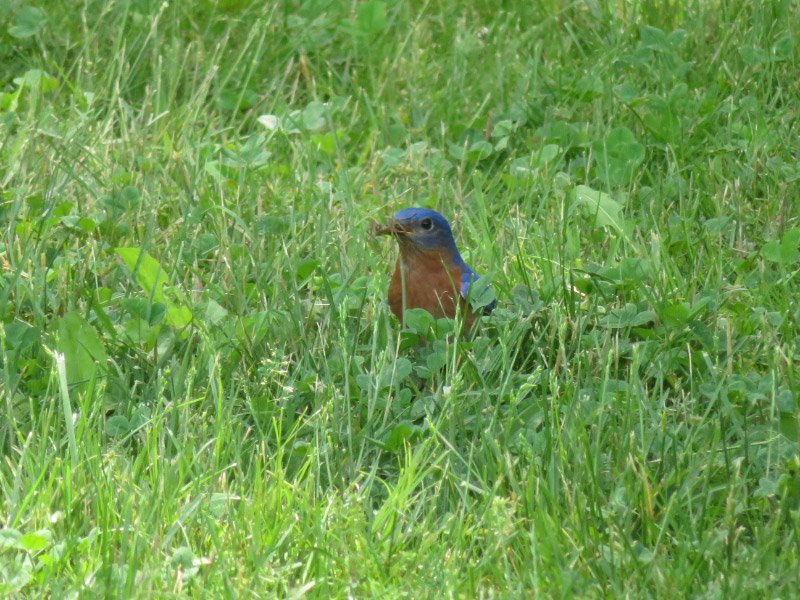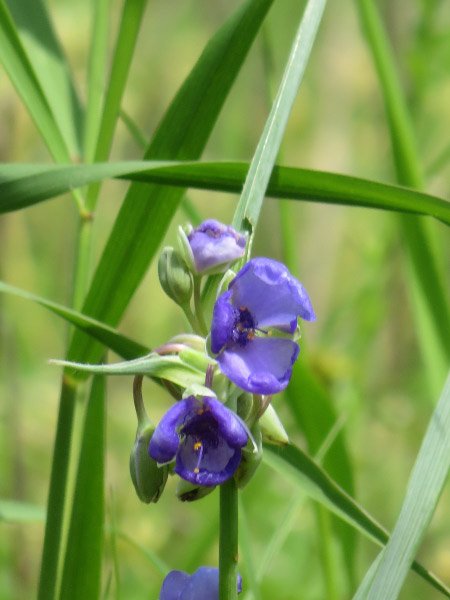Fennessey Ranch
/Our last field trip at the Whooping Crane Festival began with another early morning because we had to drive to the place (taking the ferry to cross from the barrier island). We arrived just a few minutes before the gate at Fennessey Ranch was opened for our tour group (not the first in line but not the last either).
I took a few pictures in the soft morning light: prickly pear cactus with brambles and a bird house, the layered reflected color of sunrise with the moon, and then some mourning doves in a nearby tree just as the sunlight hit them.
We waited a bit for the trailers with haybales for seats to arrive; we would tour the ranch in the trailers pulled by a pickup truck.
A few minutes into the tour there was a song sparrow in sunlight surround by mossy limbs.
I found photography from the trailer even more difficult than the bus at King Ranch. We did see wild turkeys and a bobcat…..but I wasn’t able to get a good line of sight with my camera. The bobcat was very hard to spot until it moved!
I did get some good shots of two crested caracaras high in a tree. Were they a mating pair? The birds tend to be solitary except with their mate and offspring. Since I was almost under the birds…I took a picture of the talons.
There were a few wildflowers blooming.
One of the places we stopped included some sandhill cranes in the distance. There were feral hogs near them, and the birds flew off when the hogs got too close. The ranch does sponsor hunts of feral hogs…hopefully lowering their numbers.
The ranch has nine linear miles of river frontage on the Mission River. We stopped at a place where there is a blind and feeder. Only cardinals came to the feeder the morning we were there.
I opted to photograph more wildflowers and a post emerging from the water with what looks like barnacles (I forgot to ask if the river was tidal).
I also looked at the bank on the opposite side…lots of vegetation to the river’s edge in most places although there were places where cattle probably came down to the river. The bank on our side of the river was much steeper. It would be interesting to see the flood model for the ranch.
The Fennessy ranch field trip was a good winding down for our festival attendance. I learned that hayrides on trailers behind pickups over bumpy roads are hard on my back…probably won’t do that again. We headed toward home. I was looking forward to Czech pastries in West, Texas on the second morning of the road trip back to Missouri.









